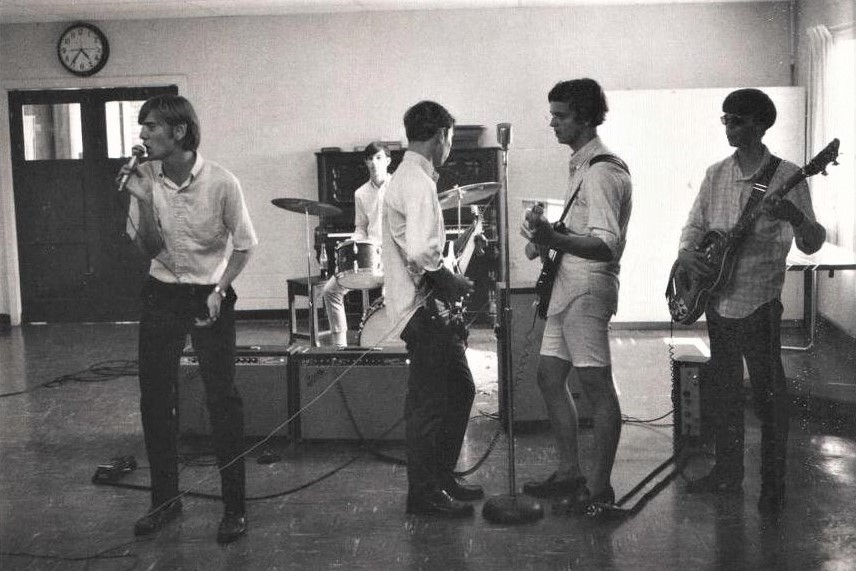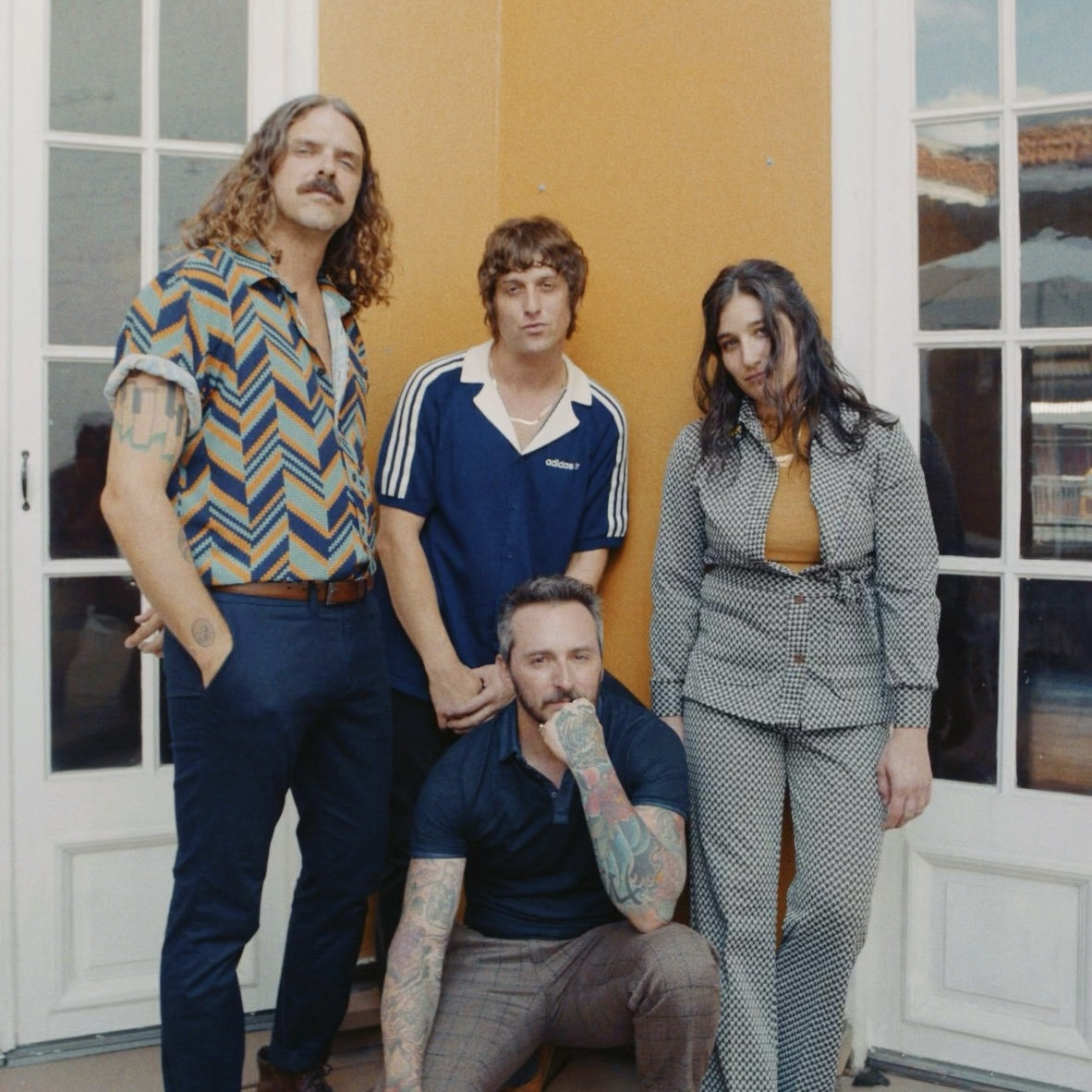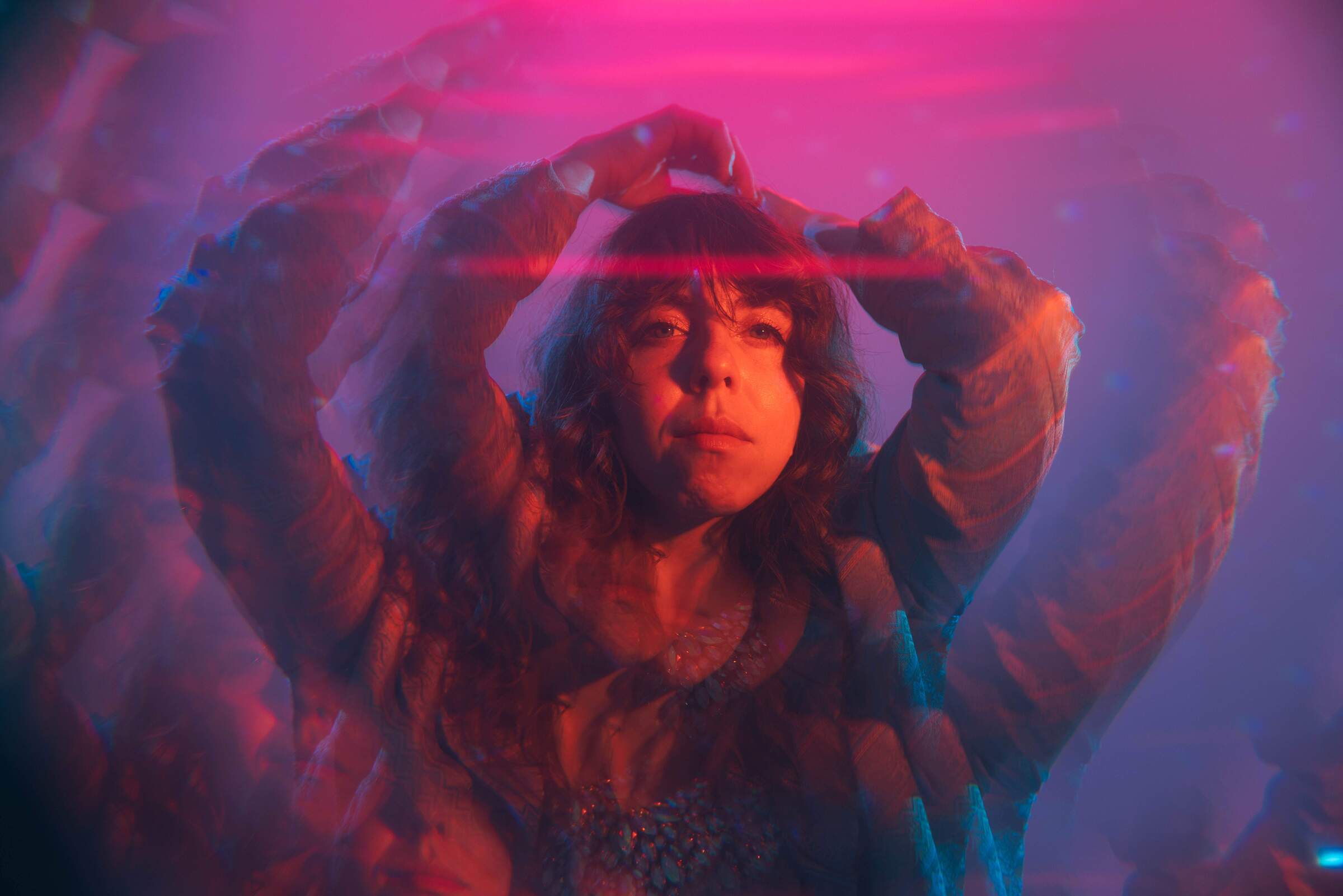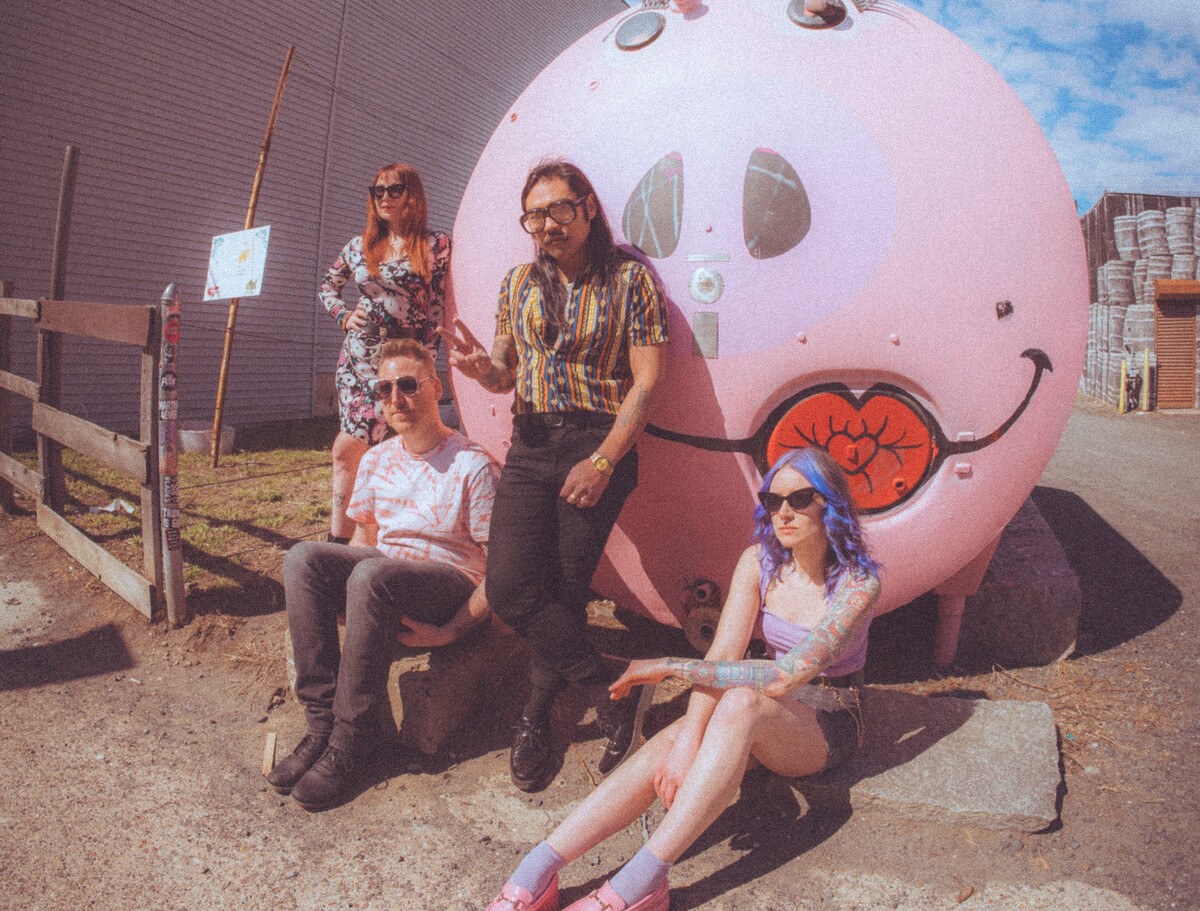White Light interview
White Light was an American progressive rock group originally from New Orleans. They reformed in Austin, Texas. The trio was signed by legendary Sonobeat Records.
The recordings include a lot of experimental material with influences coming from Pink Floyd, Weather Report and other prog rock bands. Shadoks will be issuing their material on vinyl and at the end of this year there will be a CD version with bonus material.
“White Light was born in a city famous for its multitude of musical styles”
When and where were you born?
Rob Haeuser: I was born in 1951 in New Orleans and grew up in the Lakeview area near Pontchartrain Blvd. My childhood home was only about a half-mile from the 17th Street Canal levee breech during Hurricane Katrina that flooded the Lakeview area. Unfortunately, due to the extended time it was mostly underwater, that house had to be bulldozed.
Mike Hobren: To quote John Fogerty of Credence Clearwater Revival, I was “Born on the Bayou” in 1950 in New Orleans. From about age 9 or 10 onward, I lived in the same part of town as Rob, although we didn’t meet until some years later. Like Rob’s, my family’s home was also flooded by Hurricane Katrina, but has since been restored. I’d like to go by there some day and see what sort of people are living in our old home now.
How old were you when you began playing music and what was the first instrument you played?
Rob: I started poking at a piano as soon as I could reach the keys, but never had piano lessons. As a child I played solely for personal entertainment, and have never thought of myself as a pianist. It wasn’t until I was 16, walking down the aisle in the musical instrument section of the local Sears, that I came across a $30 nylon string acoustic that was luckily in perfect tune. The tone was wonderful, and I bought it on the spot. I played it for a couple of months, and learned a few chords. The neighborhood kids were putting together a band, and they needed a bassist, so I jammed a 4″ speaker into the sound hole. Believe it or not, that little speaker actually picked up the lower 3 brass strings, and from that point forward I was a bassist. I did get a real bass soon afterwards – a very well-made Japanese copy of the Hofner Beatle Bass. When my new bass arrived, I went to the music store to pick it up and the salesman brought out a real Hofner Beatle Bass. I had a brief moment of pure joy, followed by the salesman’s “Oops!” and the realization that the Hofner wasn’t mine. The bass I ended up with turned out to be a fine instrument, and is what I used in White Light.
Mike: I was about 13 years old when I picked up the guitar. My first axe was an off-brand Barclay. That guitar was what’s called a ¾ model: it had a shorter neck than a standard guitar. But I learned the basics with it. There were a number of music stores in New Orleans, two of which were hangouts for me: Campos and Werleins. I got the Barclay at Campos, and later strings, picks, etc. Werleins had a vast sheet-music section, and I spent many long and happy hours immersed among their manuscripts, searching for guitar works to study. This was a wonderful learning experience.
What inspired you to start playing music? Do you recall the first song you ever learned to play?
Mike: The appearance of “The Beatles” on the old “Ed Sullivan Show” in New York City, which began the “British Invasion” (as we called it back then) of English groups to the States was a big influence. But of course I’d been surrounded by music my whole life. New Orleans is best defined by its music and there’s no place you can go where music isn’t pouring out the doors and onto the streets. Progressive Rock, Jazz, R&B, Blues, Soul — they were all secretly programming my brain, stoking my creative juices, long before the Fab Four from Liverpool arrived on our shores.
The first song that inspired me was Ray Charles’s “What I Say.” A friend of mine showed it to me, I’ll never forget! It was only four notes long. But the idea that I was playing a song in a matter of minutes (although a very simple one) really put a hook in me. Things took off from there. I had a good ear and could “sound out” notes and chords from the radio and vinyl records pretty easily. Before long I was “borrowing licks” from all sorts of people, which is the way most people develop their style I suppose. Later, I formalized my musical training by taking private lessons in both Jazz and Classical guitar where I learned discipline, advanced chording, sight-reading, and scoring (that would come in very handy later on) until my fingers fell off. By then music had become a serious endeavor for me.
Rob: My mother was my inspiration. She was an excellent pianist, and could play the classics from sheet music, which fascinated me. One of my earliest memories is of sitting on the floor by my Mom’s feet, listening to her wonderful rendition of Clair de Lune by Claude Debussy. I never learned to read music, but the beautiful sounds she could make motivated me to play, even if my early efforts did sound suspiciously like Chopsticks. The first real song I worked out by ear was “In the Hall of the Mountain King” by Edvard Grieg.
You formed in New Orleans back in the Sixties and then in mid Seventies you resurrected in Austin, Texas.
Mike: Well, the first White Light was a high-school cover band, co-founded by me and Rob. There were lots of rock-star “wannabes” around New Orleans back then, inspired by the British Invasion and the classic Top-40 rock music that filled the radio airwaves: the Doors, the Rolling Stones, the Animals, etc., and a lot of one-song chart toppers. The other members of White Light were two high-school friends and one neighborhood kid on the drums. None of us had any formal musical training then, but the songs were a lot simpler to learn and play back then, too. So we just dove in the deep end of the pool and began to swim!
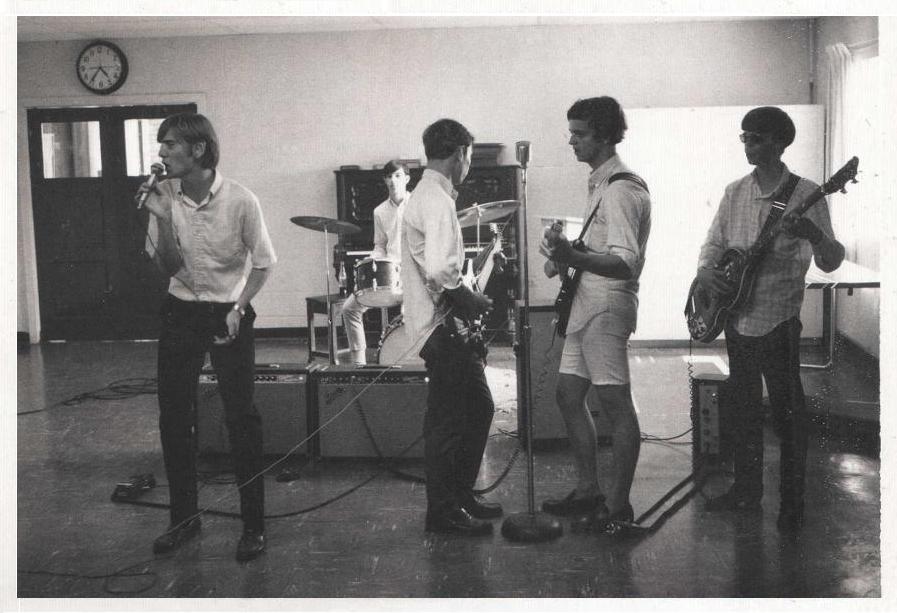
What was the rock’n’roll scene in New Orleans back in 1967?
Mike: I’ll defer to Rob for this one, Klemen.
Rob: New Orleans has always had its typical French Quarter blues and jazz bands, but we didn’t play the quarter. Uptown and in the suburbs, Rock was alive and well, as evidenced by the sellout at City Park Stadium for the Beatles, and later concerts by Jimi Hendrix, Soft Machine, Vanilla Fudge, etc. All of the high-school bands I was aware of were playing R&R. The requests at the gigs we played were always for R&R tunes. The New Orleans version of White Light (WL-I) pre-dated a famous local venue called The Warehouse by a couple of years, but the fact that it opened in 1970 and had great success shows that R&R was alive and well in New Orleans. The city embraces a wide variety of musical styles, and R&R was no exception.
White Light was Rob Haeuser (bass guitar), Mike Hobren (lead guitar, vocals), Tracy Pfisterer (drums), Dennis Saucier (rhythm guitar, vocals), and Jayce Tohline (vocals). How did you meet?
Rob: I was in a garage band prior to White Light, and we were playing at a Battle of the Bands being held on what we call the “Neutral Ground”, an open area about a city block wide between Pontchartrain and West End Boulevards. After we finished our brief set, I was approached by Mike Hobren and Dennis Saucier (a rhythm guitarist and vocalist), and we talked about forming a band that might have greater potential for success. I had also previously played in a band with my cousin on keyboards. He lived near a kid named Tracy Pfisterer who had a reputation for rattling the neighborhood from his garage while learning to play the drums. I had heard Tracy a few times while visiting my cousin, and also knew him as a member of my cousin’s church. Tracy jumped at the chance to play in a real band. As I recall, Jayce Tohline and Dennis Saucier were in a glee club together. Our final member was Jayce as lead vocalist.
Mike: I knew guitarist Dennis Saucier the longest. We lived in the same neighborhood and both attended the same primary and high schools. Vocalist Jayce Tohline also attended our high school and that’s where we picked him up. (I think Jayce is a non-ordained evangelist now!) Drummer Tracy Phisterer lived in the old neighborhood, too. I first met Rob at a battle of the bands in our neighborhood, as Rob said. Rob and I have been friends and have known each other a long time, having had numerous adventures together, both with White Light or just the two of us.
Do you think you were an outsider in a place like New Orleans. What were your influences?
Mike: This is a total misconception of New Orleans, Klemen! Yes, at the beginning of the last century Dixieland Jazz came along and started a new musical idiom that would be embraced around the world. Today that is played mainly for the tourists in a few holdover venues in the French Quarter. Things have changed a lot over the years. When White Light was coming up, Progressive Rock was everywhere at such venues as The Warehouse, The Flower Pot, The Bank, and concerts held at City Park Stadium and the Municipal Auditorium. We saw lots of big acts that came to town: Pink Floyd, the Allman Brothers Band, Genesis, Jimi Hendrix, Alice Cooper, Wishbone Ash, the Moody Blues, Vanilla Fudge, ZZ Top, the Doors, Procol Harum, Jethro Tull, Weather Report, the list goes on and on. I recall the night I saw Jimi Hendrix at City Park Stadium, watching in awe as he set his Fender Strat on fire with lighter fluid and then began to straddle the thing, LOL! I’d never seen anyone do that before and I likely never will again! But probably the wildest and noisiest concert I saw was The Beatles, which was also held at City Park Stadium. The girls were so wild, I got repeatedly bopped ‘n’ biffed by knees and elbows by the out-of-control, screeching she-teens! I got to shake the hand of one of the Fab Four through the window of their limo as they were leaving the concert, although through the limo’s smoked glass I couldn’t tell which Beatle it was.
Rob: My early childhood influences were mainly classical music pieces played by my mother. Although both of my parents were born in Louisiana, neither of them were native New Orleanians. Growing up near the lakefront, the Mardi Gras season was the only time I was exposed to the Dixieland, blues, and jazz that permeates the French Quarter. Then I got an AM radio for Christmas, and everything changed – I discovered British bands. One of the first hits I fell in love with was Petula Clark’s Downtown. When the Beatles took over the airwaves, I was completely hooked on the British sound.
Do you feel like the scene played an important role in shaping your musical tastes or the way you perform at this point?
Rob: The New Orleans scene didn’t play much of a role in shaping my musical tastes, but it definitely had an effect on my performance style. Improvisation is a key component to Jazz and Blues, and jamming is always a great way to allow the creative juices to flow. That didn’t have much impact on White Light at the time though, because we were playing strictly cover material, and didn’t take many liberties with the music.
Mike: For me, New Orleans played a prominent role in my musical upbringing. New Orleanians have a way of assimilating most anything into the local culture and then making it uniquely their own. As such, I had this same eclectic approach when it came to music: I was influenced by everything I heard and attempted to incorporate it, in one way or another, into my personal style. Because New Orleans is such a musical crossroads for so many bands with many different styles, I was exposed to lots of sounds that, in time, would gel into a signature style of my own. I think if you listen to White Light’s new album, you’ll hear bits of Progressive Rock groups like YES, Pink Floyd, and even some strains from 12-string acoustic guitar wizard Leo Kottke, a major influence for me, whose playing inspired the track “Song for Leo” on our new album.
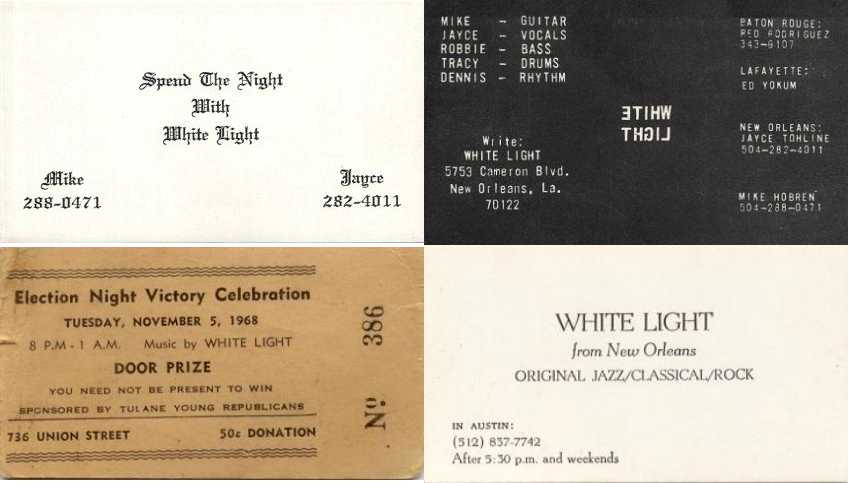
You performed in Uptown bars like The Rathskeller and Sigma Nu as a very young men.
Mike: The Rathskeller was a students’ venue located on the campus of Tulane University in New Orleans. Sigma Nu was a fraternity house where we played. This was when we were still teenagers, playing cover sets of the Top-40 songs of the day. Yes, we were indeed underage, but we had come to work, not booze. That’s not to say, of course, that our audiences didn’t indulge in a round or two! Those were some wild and rowdy times to be sure.
Rob: As Mike says, New Orleanians like to have a good time! The Rathskeller was always packed to the walls, and the Sigma Nu dances weren’t as rowdy as the Toga party in Animal House, but they came pretty close. Our most unusual gig was when we played on the Mark Twain, a riverboat docked at the New Orleans riverfront. The Mississippi River is about a mile wide there, and waves can be pretty intense. The deck was moving underfoot the entire gig. I can’t recall specifically who it was, but one of us came close enough to being seasick to go through at least 50 shades of green!
Who were some of the artists you shared the stage with?
Rob: The New Orleans-based version of White Light never shared the stage with other bands. We were basically a party band, and were always booked as the sole act for the gigs we played. The Austin-based White Light did share the stage with some greats, as Mike mentions below.
Mike: When White Light later reunited in Austin in 1974, we would play with some pretty notable people in the business, but we can talk more about that later.
The band split up in early 1969.
Mike: I’d say that things had just run their course, Klemen. Most of us graduated from high school and moved on to other interests. Rob and I joined other groups. Tracy stayed in music for a while. Jayce went off to college and Dennis gave up music altogether. It was just a natural evolution of growing up and going our own ways.
Rob: I took a few months off from playing, and started college the following fall. It was then that I met the musicians I’d start my next band with.
What bands followed?
Rob: While at college I shared a dorm room with Joe Sunseri, who was a great drummer and saxophonist. Joe knew a guitarist named Clark Vreelund and a keyboardist named Timmy Youngblood, so we formed a 4-piece jazz group. After rehearsing for a couple of months we played a gig in City Park. We hadn’t named the band yet, and were playing on a hot, steamy New Orleans summer afternoon, so Timmy came up with “Dog Day Summer”. After that band parted ways, I teamed up with Chris and Scott Sherman from Dr. Spec’s Optical Illusion, a band that had made a name for itself as one of the best local bands in town. We met through a mutual friend who was a wildman guitarist. We focused on popular FM radio hits, such as the Allman Brothers’ Whipping Post, but circumstances were such that we didn’t stay together long enough to play any gigs. It was soon after that band dissolved that I moved to Austin.
Mike: I joined a nine-piece, horn-driven band called Circus that modeled itself after Blood, Sweat & Tears. We had one fat sound! This was without a doubt the most successful band I was in during those formative years. Because we were in demand by some of the bigger clubs in New Orleans, such as The Rivergate, we had to join the local American Federation of Musicians labor union – local AFM 174! (LOL, I still have my union card as a matter of fact! What a memento of a weird time that represents!) I recall we all first had to interview with several rather imposing-looking union reps who sat at the opposite end of a long conference-room table, just glaring at us. And the whole time I was thinking, ‘What is a teenage kid like me doing here?!’ But it all worked to our advantage really. The better music venues in New Orleans were closed union shops, which meant that if you didn’t have that union card, you couldn’t play there. Sometimes we’d be in the middle of a set when a couple of union reps would walk in, unannounced, during our breaks to check us for our cards – sort of like the cops pull you over to check your driver’s license! Well, with nine of us in the group, there were a couple of us who hadn’t quite joined the AFM yet, or were late paying their union dues. The union reps would actually fine us whenever this happened! But it was all fun and games to us!
Oh, I almost forgot – what does “White Light” stand for?
Mike: The “Light” part came from a Los Angeles-based psychedelic group of the day called Clear Light – we thought their name was cool. But we’re still not sure how we arrived at the “White” part.
Rob: I’ve always thought of White Light as a metaphor. White is the combination of all colors, and White Light was born in a city famous for its multitude of musical styles. The metaphor continued with the Austin-based version, which had a much wider range of musical styles than the original band. Light is electromagnetic radiation vibrating at particular frequencies, and sound, although it’s not electromagnetic radiation, also involves vibrations at specific frequencies. That may be a stretch, but it gives some meaning to the name.
Did you release any singles in the Sixties?
Rob: Unfortunately, no. We played popular radio hits, but no original music. We were focused on playing gigs, and the thought of going into the studio didn’t even cross our minds.
Mike: No. It was the second, resurrected White Light in Austin, Texas that first recorded a full-length album in 1976 at Blue Hole Sounds studio in central Texas, working with its founder and legendary music producer Bill Josey Sr. For us the ‘60s were our formative years for the most part.
Around 1974 you formed a new band in Austin, Texas.
Mike: Progressive Rock was happening in the U.S., too!
Rob: After moving to Austin, I was immediately impressed with its musical variety. Back then, my natural tendency when thinking of Texas music was to assume it was all Country-Western (CW), but in fact, as I first drove into town and flipped to the local FM radio station, Purple Haze was on, a song we had played back in New Orleans. It was quite a relief to hear that CW wasn’t the only musical style in town. After checking out the local scene, I contacted Mike and Rusty back in New Orleans and suggested that they consider moving to Austin to join me in resurrecting White Light as a 3-piece progressive rock band. The concept was that we’d play all original music, and develop a style that was more diverse than the typical rock band of the time.
Who were the members of ’74 White Light?
Rob: I played bass guitar and synthesizers, my brother Rusty was on drums, percussion, and flute.
Mike: I played electric and acoustic guitars and sang vocals, and I wrote lyrics. There may have been an occasion or two where I picked up the harmonica and played into the mic…I’m not too sure about that…but I was no Stevie Wonder on the harp I can tell you! LOL!
“Our inspiration was no doubt the bands we idolized”
When did you begin writing music? What was the first song you wrote? What inspired it and did you ever perform the song live or record it?
Mike: I can’t say what our first song was. Inspiration? I’d say it was simply a desire among the three of us – after years of playing in cover bands – to break out of that mold and do our own thing. We had each developed a personal style as we “grew into” our instruments. We jammed a great deal and those sessions eventually led us to ideas for songs…the ideas just naturally began to flow. We took the themes, patterns, rhythms, time/key signature that emerged from our jam sessions and melded them into complete opuses, layered with a variety of instruments and special effects. This was our “Process!” In time, we developed a signature sound and before long we had complete sets of original music that we played at live gigs.
Rob: Mike and Rusty moved to Austin in late summer 1974, and we immediately began jamming. At the time I had a reel-to-reel tape deck, and recorded our jams. The idea was to just let the music flow, to see where improvisation would take us, and then sit down with the tapes later and pick out the sections that we felt came together best. I can’t really say what our first song was, because the ideas came quickly and were immediately adapted into one song or another. It was more like we were writing a number of songs simultaneously, and we’d bounce from one to the other as ideas came up. Our inspiration was no doubt the bands we idolized. The period starting in the late 1960’s and on into the 1970’s was a great time for bands that played “Orchestral Rock”, especially many of the British bands. The fullness of the sound that these bands could achieve was truly inspirational. When playing live, we would go through our entire repertoire, so yes, I’m sure we played the first song we wrote live. I don’t recall which song was first, so I can’t say that it’s part of our upcoming album, but I have no doubt that it was recorded at some point because of the method we used to write the material.
“White Light could really rip the paint off the walls when we were going at full throttle!”
Where did you rehearse?
Rob: Mike sums that up below.
Mike: At first we rehearsed in a number of trailers where we also lived. We chose trailers far out in the Texas countryside where we could push our jam sessions to the limit without any neighbors nearby to call in “disturbing the peace” complaints on us! Our final rehearsal location (and residence) was a huge house in north Austin, Texas. We had a sizeable practice area as well as living quarters, and our neighbors were tolerate enough that they never complained to us, or anyone else, about our sometimes “bombastic” sessions. White Light could really rip the paint off the walls when we were going at full throttle! That was our best place.
What audio equipment did you use?
Mike: I played a Gibson SG double-cutaway and a gold-top Les Paul electric guitars, and an Epiphone 12-string acoustic guitar. (And maybe that harp!)
Rob: I used a Dan Armstrong Ampeg acrylic bass, Roland SH-1000 synthesizer, RMI 368X electra-piano/harpsichord, Maestro Echoplex, and a Fender volume/tone pedal. My bass rig was a Peavey 200-watt head and two cabinets, each with two 15″ speakers. We also had a Peavey PA. Rusty used Gretsch drums, Congas, various other percussive instruments, such as a Kalimbra and wind chimes, and a flute (probably a Bundy).
What happened next? What was the first gig?
Mike: Rob can tell you about the Joshua Ives Festival of Love!
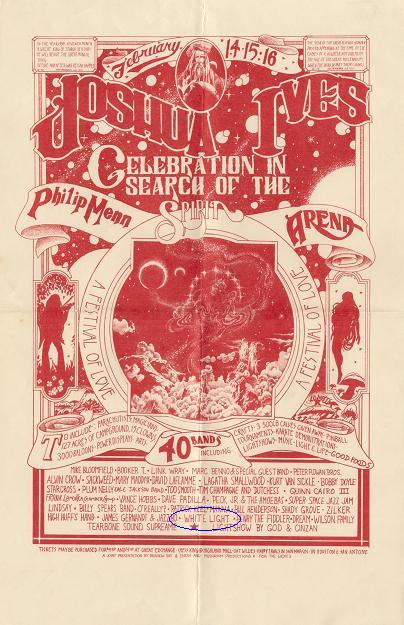
Rob: Somehow we connected with a guy who was involved in an upcoming festival being billed as the Joshua Ives Festival of Love. They had already booked a wide variety of local, regional, and national/international acts, but apparently needed more bands to fill the three-day event. We managed to get our name on the bill, and so ironically, our very first gig, after just a few months of developing our all-original material, was at a pop festival. It featured some big names in the music world, including Mike Bloomfield, Booker T., Link Wray, Alvin Crow, and David LaFlamme, the violinist from It’s a Beautiful Day.
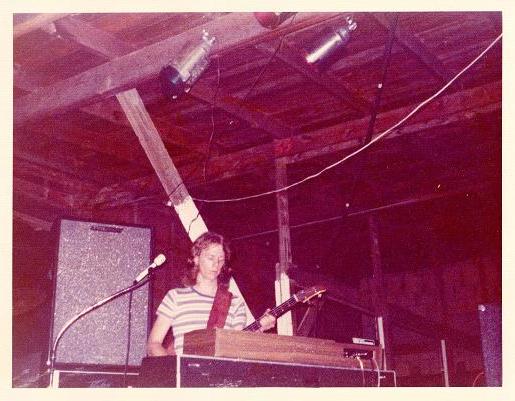
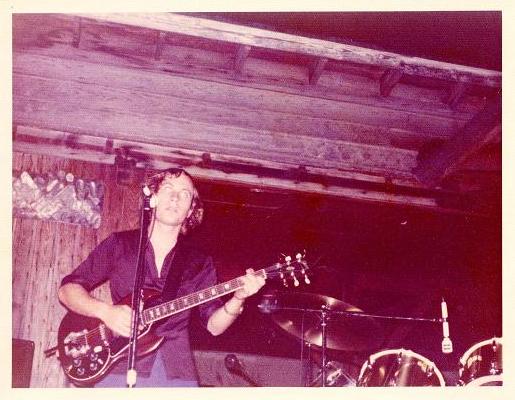
How was the scene in Austin back then?
Rob: I’ll defer to Mike for this one.
Mike: Austin in those days was overrun by the “Outlaw” Country Music scene, with Willie Nelson as its main front man. Getting gigs was difficult, but we did play some good venues. And of course folks like Bill Josey were actively bringing a whole new alternative sound to the city. Liberty Lunch was one of the top venues we played that, over the years, would host many of the top names in Rock. I really can’t say there were many groups playing in Austin that I cared for with the exception of the Electromagnets, then headed by guitar wizard Eric Johnson. They played some of the clubs we did, notably the Castle Creek Club, which was one of the few venues back then that welcomed Progressive Rock. (I met my wife at the CCC the first night we played there in fact.) We were aware of the 13th Floor Elevators but we didn’t know them or ever perform with them.
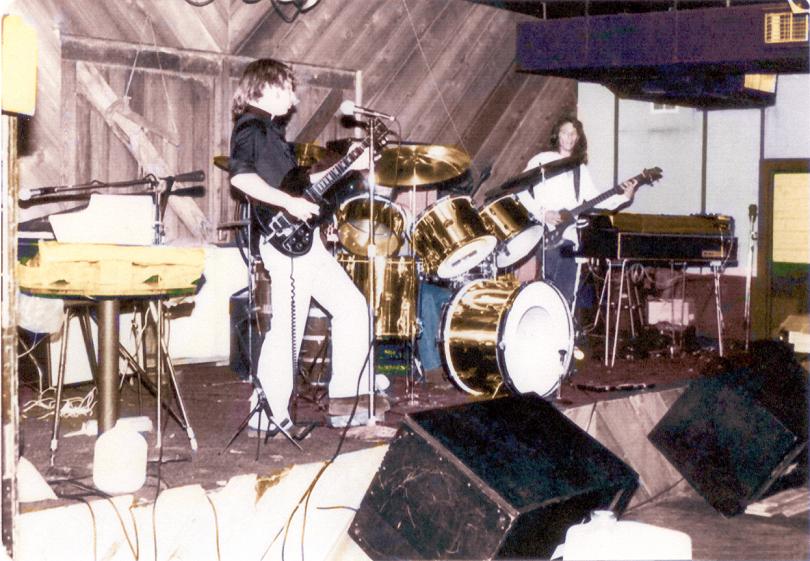
You were invited to be part of a pretty big festival called the Joshua Ives Festival of Love.
Rob: The festival almost caught Austin off-guard. It was briefly advertised on the radio, and even then it was basically last-minute coverage. I’m not sure how many people showed up over the course of 3 days, but I’d guess it was a few thousand, which no doubt disappointed the promoters. These days, it’s almost impossible to find any info about it on the Internet. The only references I can find are a brief mention on Mike Bloomberg’s website regarding his schedule (note that Bloomberg’s site has the year wrong), and on the website I set up some years ago to function as a “White Light Archive” (http://whitelight.mapperguru.com). To this day, I have no idea who Joshua Ives was, where he came from, or even if his name was fact or fiction.
Mike: The Joshua Ives Festival of Love was our first gig as a reunited White Light! In some ways it was like a comic version of a mini-Woodstock. The players were all there (quite an impressive lineup really), the equipment and stage setup were all there. But the promotional advance work was lacking and attendance was low. Still, it was a special time for us.
Did you meet any musicians?
Mike: We did met some big names in the music business, including violinist Dave LaFlamme of It’s a Beautiful Day (You may remember their hit song ‘White Bird’), and Mike Bloomfield, formerly of the Paul Butterfield Blues Band. But I think a high point for us was, after we played, we received compliments from ‘50s guitar sensation Link Wray, who Rolling Stone would later name as one of the Top 100 Guitarists of the Last Century!
Rob: We played a 3-song set, and by all accounts, it went well. The highlight for me was after our set. I was backstage packing up my bass when a guy I didn’t recognize introduced himself and said “You guys sound really good!” I was impressed that he had taken the time to seek me out and offer the compliment, but later, when I heard his 3-piece hard-rock band play some great power tunes, it struck me that Link Wray was the real deal, and his earlier comment suddenly carried a lot more weight.
How about your collaboration with legendary Bill Josey. Would you like to share a few words about him?
Mike: Rob probably had the closest, most candid relationship with Bill Josey of any of us, and I think he should respond to this question, Klemen. I know that, long before guitarist Eric Johnson made a name for himself, Bill had confided to Rob to ‘keep on eye’ out for the guy! Bill knew talent when he saw it, and he had called that one right!
Rob: Bill was one of the finest gentlemen I’ve ever known, as well as a consummate professional. He sincerely cared about the people he worked with, and bent over backwards to accommodate our needs and musical goals. When we met Bill we were unaware that he had a serious medical condition – he never allowed his failing health to affect his attitude or work ethic. The memory of Bill’s long hours working with us in the studio, and afterwards in engineering and mixing our music, is both inspiring and heart-wrenching. He passed away just 6 months after completing our album work tape. To this day, he is one of my greatest heroes.
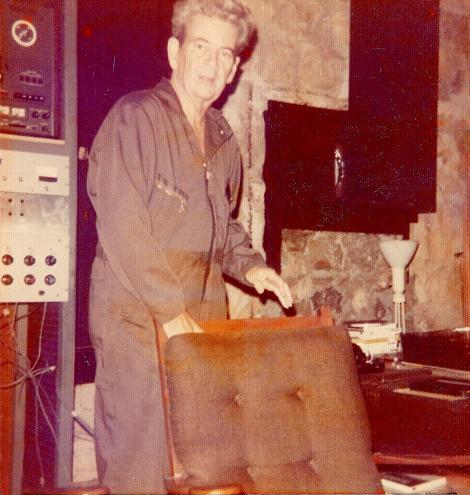
How did Sonobeat Records get in touch with you?
Mike: Well, that’s a very uncanny story that Rob tells better than me!
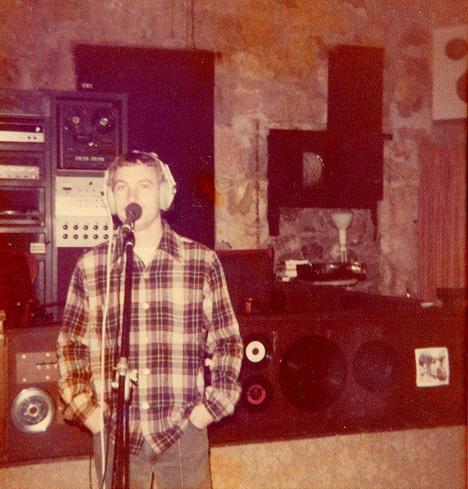
Rob: We had moved to the hill country northwest of Austin, and would sometimes drive the backroads just to get away from things for a while. On one of those rides we came across the Blue Hole Sounds studio, housed in an old stone church building. We wrote Bill a letter to introduce ourselves, and to open the door for possibly using Bill’s studio to record a demo tape. That came about in late October 1975, when we recorded a 3-song demo tape for the nominal sum of only $50! That too underscores Bill’s unwavering generosity; he could have charged us substantially more than he did.
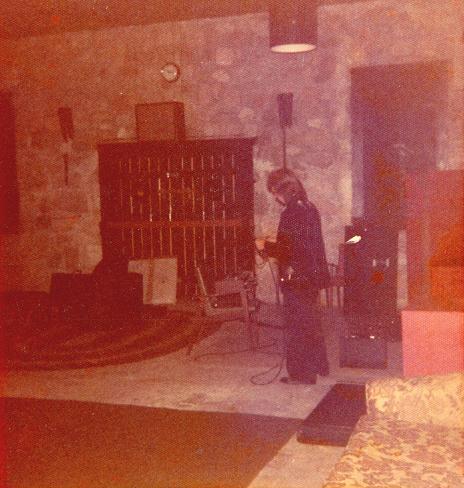
You recorded at Blue Hole Sounds (Sonobeat’s home studio).
Rob: It was the experience of a lifetime for me! Bill had converted an old stone church building into a recording studio, and it was large enough to have a bit of natural echo. Bill really knew his business, and had set up low sound walls so that the musicians could be isolated enough for good sound separation, but could still make eye contact with one another.
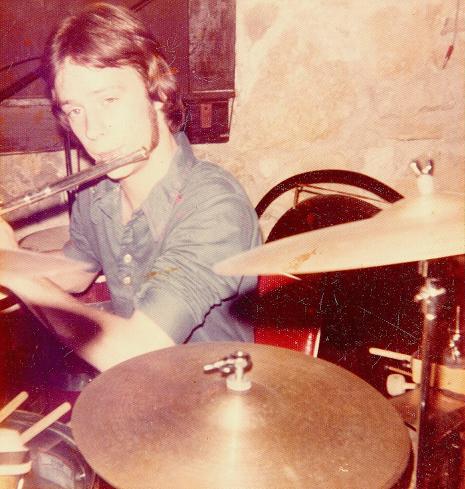
We recorded in the dead of winter, and because of the thick stone walls, it was always a bit cold, which had an effect on the guitars, especially Mike’s acoustic 12-string. The strongest and fondest memory for me wasn’t actually related to recording the music. We had completed the initial recordings, and were in the dubbing phase. Bill and I stepped outside the studio while Mike was dubbing, and we had a personal conversation that, although I won’t disclose the topic, was something that I took as a tremendous compliment, especially given Bill’s knowledge of the music industry and the local Austin music scene in particular.
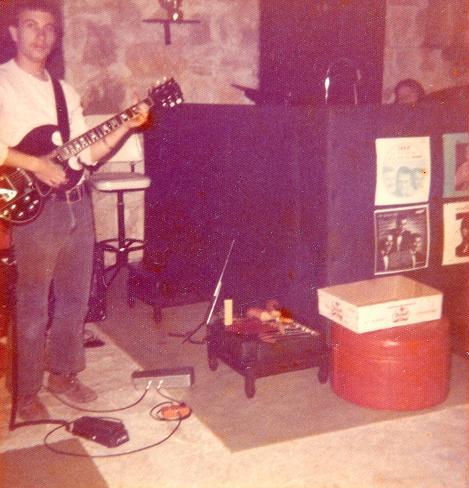
Mike: Bill strived for excellence…one reason that it took us a couple of months to record the album. He was a perfectionist who had no qualms about “do overs” if a recording we were working on didn’t come out just right. This is not to say that Bill was any sort of “taskmaster.” He was one of the most gentle, easygoing people you’d ever want to meet. He took a genuine interest in finding new, unrecorded talent (like us) and giving them their dream shot! He was a huge contributor to the Austin alternative-music scene and helped a lot of people up the ladder, many of whom would later go on to become major players in the R&R scene, such as progressive-blues guitarist Johnny Winter. Bill recorded Winter’s very first album.
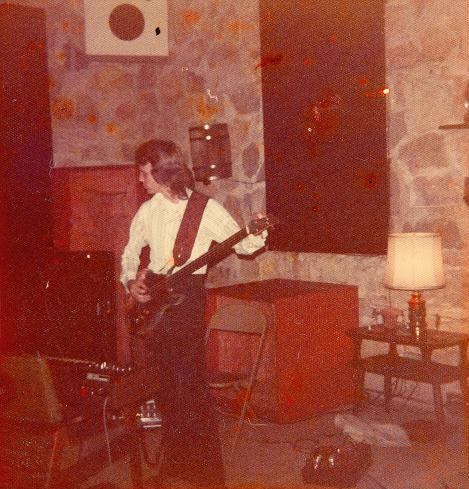
What gear did you use?
Mike: I couldn’t say…I was more focused on keeping my own gear tuned and my fingers warm and nimble in a very cold central Texas winter that year. But there was always a certain magic and a good vibe in Bill’s studio.
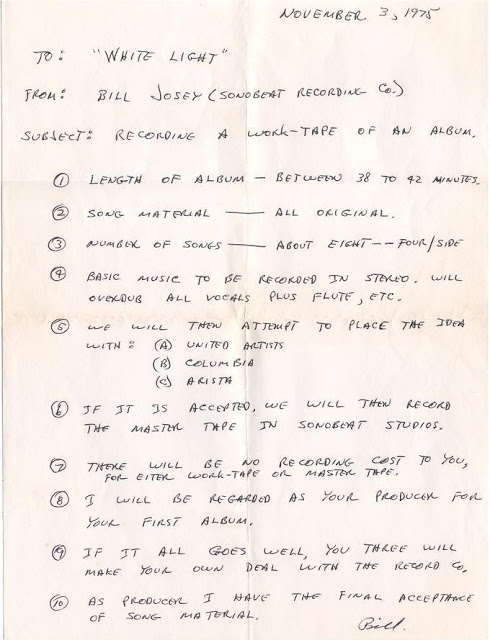
Rob: We used our regular performance gear, although as far as my bass rig was concerned, one speaker was sufficient. Bill had a couple of 4-track reel-to-reel tape recorders, and no doubt a mixing board, but it was set off to one side and out of view.
How long did the recording process last?
Rob: We recorded on and off between late December 1975 and late February 1976, so by the calendar it was about 2 months. We actually only spent a little more than a week in the studio during that 2-month period, although it seems much longer now. We all had fulltime day jobs, so our recording sessions were mainly restricted to Saturdays.
Mike: Yes, about two months in all, a fairly long time because we did so much overdubbing to our primary tracks. Since White Light collectively played numerous instruments, this opened the door to layering our studio work with a lot of multiplexing. We began recording in December 1975 at Bill’s country studio, Blue Hole Sounds, and completed all recording by February 1976. The final mix of all the tracks was completed by Bill and his assistant, Tom Penick, on March 1st.
Josey sadly passed in 1976. What happened next?
Mike: Rob can tell you about the status of our album, our master tape, after Bill’s passing. It was the worst of times for White Light — the fall of 1976. We had grown really close to Bill in the short time that we knew and worked with him. Although our fresh-cut album was stalled at that point, I know I was more devastated at the loss of a good friend. In east Austin, there’s a small cemetery where Bill was laid to rest. A simple headstone, that I once visited to say my good-byes to Bill, marks the spot. I think they should have erected a shrine to Bill in recognition of his cultural contribution to Austin. He was a one-of-a-kind, self-made man!
Rob: Unknown to us at the time, our last gig was just a couple of weeks before Bill passed away. We weren’t immediately aware of his death, but White Light was already starting to unravel, mainly because of the record company rejection mantra of “limited market potential”. At that time, the record companies were looking more for disco and pop hit bands, and we simply didn’t fit that mold. However, there had apparently been a shake-up in management at United Artists, and they asked Bill to resubmit the tape. To this day, we don’t know if Bill resubmitted it, and if so, what the reaction was. The apparent lack of industry interest was starting to take its toll, but we plowed ahead and continued to play around town. Our last gig was August 22, 1976 at the Castle Creek Club, and for the next two weeks everything still seemed to be moving forward with the bands’ plans. We had even decided to move to Los Angeles within the year, but then suddenly the band fell apart. Bill’s passing probably had a lot to do with that. It was a sad, swift end for White Light.
How would you describe your sound?
Rob: At times we were very tight, and at other times we bordered on controlled chaos, sometimes all within the same song (the track Stargazer on our album is an example). Because of our improvisational style, we could record the same song multiple times, and it might be one way in one take and another just a few minutes later. We enjoyed the flexibility of exploring different aspects of the music in different ways, but I’d bet that it was a nightmare for Bill, because among other things, he had to work within the time constraints of vinyl LPs. We weren’t particularly concerned about the length of our songs, but ultimately it all had to fit in about 21 minutes per side, which Bill somehow managed to pull off. I’m still amazed that he was able to arrange the song order such that the difference in playtime between Sides I and II was a mere 2 seconds!
Mike: Bill gave us a lot of free reign in the studio, allowing us to experiment and push our recording efforts to the same sort of spontaneity and unexpected sound bites that often emerged during our jam sessions. It was very real. Certainly we had a set of clean tracks that Bill recorded to tape. But Bill also let us go the extra mile – something that others studios probably wouldn’t have let us do! I think he knew that White Light was a performance-based group, and that we were at our best when we got into a certain groove and the improvisation began to cook!
What can you tell us about Shadoks release?
Rob: The songs on the Shadoks release are digital remasters of the original recordings, in the original order as laid out by Bill Josey. After Bill passed away, I believe it was Michele Murphy who stopped by Blue Hole Sounds and saw that many of Bill’s effects, including a number of audio tapes, were still sitting in the old building. Blue Hole was actually an old stone church building, and was still being used for services on Sundays, so Michele put everything of Bill’s that she could find into his car, including the White Light tape. Bill’s station wagon sat parked outside the church for months afterwards. The tapes inside were exposed to extreme weather conditions, from the freezing cold and humidity of a wet winter to the blazing heat of a Texas summer. Sometime in 1977 Bill’s son Jack brought all of Bill’s effects home, and literally put it in a closet, where it sat for almost 30 years. Sometime in 2005, Mike discovered the Sonobeat website, and found a section for unreleased material. As it turns out, the Joseys had mentioned us (please go to this link for the Sonobeat writeup), and included a very brief excerpt for our song Fields. Mike contacted the Joseys, and was told that the tape had been rediscovered in a closet at Jack Josey’s home. Jack was gracious enough to transfer the entire album to a CD, which he sent to Mike. According to Jack, the tape was in such bad shape that it was actually peeling like a Crayola on the tape heads as he transferred it. Soon afterwards, Mike managed to contact me even though we had been out of touch for 28 years, and sent me the CD that Jack had burned for him. Sure enough, the audio quality was terrible; the right channel was severely degraded, both in volume and fidelity, and both channels suffered from a loud, persistent hiss. It was really bittersweet to finally have the complete album in hand after so many years, but with so much audio degradation that it was almost painful to hear. I decided to remaster it, and had some success in restoring it to a point where I could listen to it without cringing. This is what was uploaded to the White Light Archive website I mentioned earlier, mainly just for posterity, and as a backup in case of disk failure at home. A few years later I set up the White Light page on a website called TheSixtyOne, which is where Enrique Rivas first heard us (later Enrique would do the artwork for our album cover). He managed to contact me, and expressed interest in Stargazer, a song that hadn’t been uploaded. I sent him an mp3, and our conversation turned to a fellow Enrique knew named Thomas Hartlage, owner of Shadoks music. Enrique put me in contact with Thomas, and soon thereafter he, Mike, and I agreed to release the album under the Shadoks label. Unfortunately, my initial de-hissing years ago was fairly aggressive, and introduced digital artifacts. At the time, I was content just having something to listen to, but none of it was suitable for release to the public. Over the last few weeks I’ve completely remastered all songs from the CD Jack Josey sent back in 2005. This time around you can hear a bit of hiss here and there, but less aggressive de-hissing allows some of the more subtle parts to come through that were previously almost indistinguishable because of the digital artifacts. I hope that folks will enjoy it, and keep in mind that what they’re hearing was remastered from a severely damaged Crayola-peeling audio tape that, against all odds, somehow managed to survive.
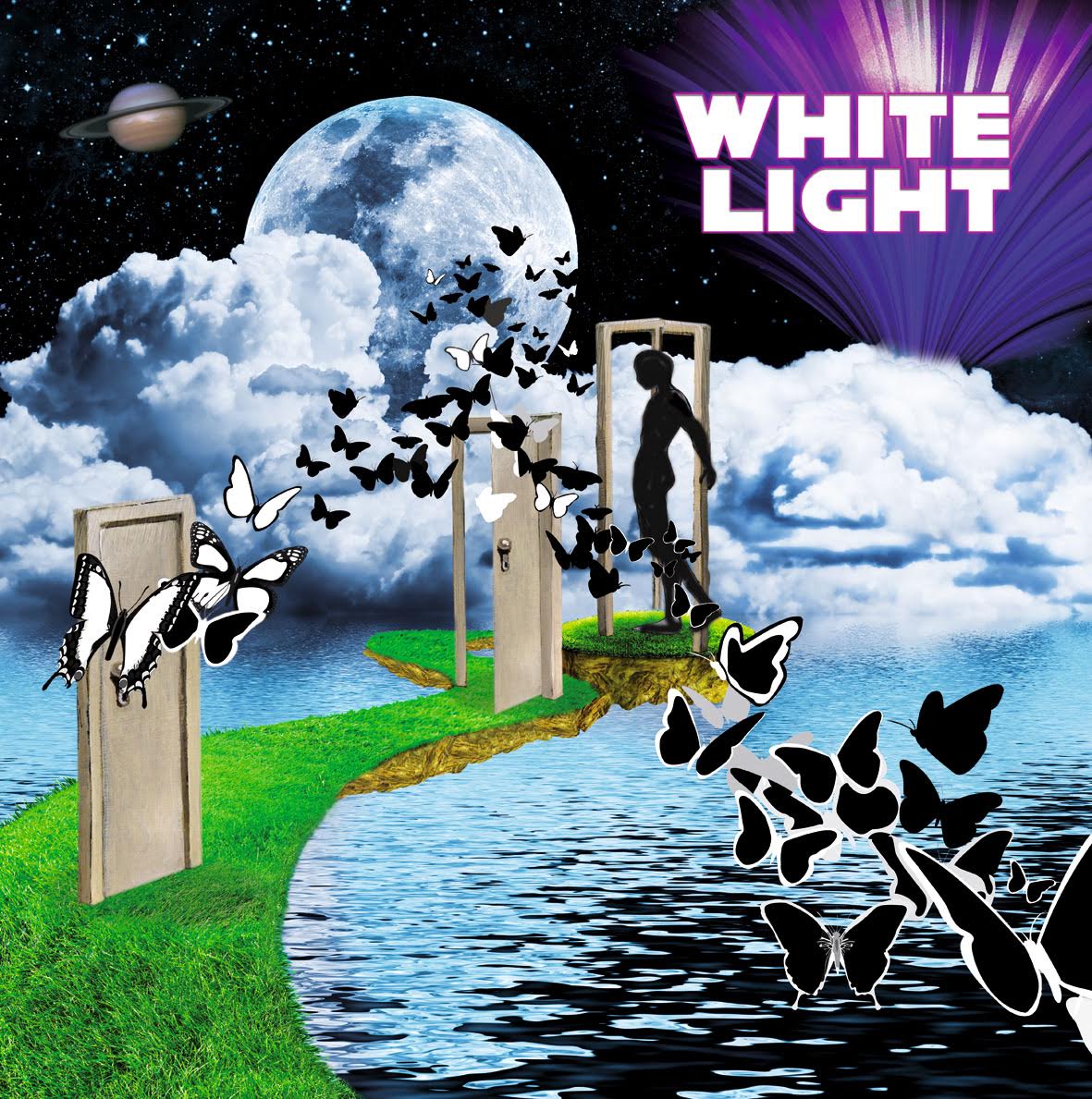
Mike: Klemen, I think fans of Progressive-Rock music are really going to love White Light’s album! Listeners will be treated to a real romp of experimental, and yet well-controlled, music that utilizes a host instrumentation and special effects. (I even used a cello bow on my guitar’s open low E string to obtain a drone & flutter effect on the track Stargazer!) Our penchant for jazz-rock-fusion music is powerfully expressed on the track Pacemaker. On the track Oceans, listeners will think they’re lying in the sand at the beach! Rob’s bass grounds the music perfectly and his synthesizer work is, at times, even haunting. Rusty provided well-rounded percussion to inject a powerful rhythm line into the music. Thanks to Rob’s hard work, all of the tracks went through extensive audio restoration and remastering. Collectors of (and newcomers to) Progressive-Rock music from the mid-‘70s period will be genuinely surprised and delighted! For us, it is the album that “should have been released” 40 years ago, which even Sonobeat Records has called “considerably ahead of its time!” I believe that our music from that period would stand up against anything being done today!
What currently occupies your life?
Rob: After White Light was dissolved, I married and some years later had two fine boys who are now in their mid-twenties. My eldest son works at a television station in central Texas, and my youngest son is in graduate school studying for his Masters, with a focus on working with Museums. I’m now retired from a career as a Programmer/Systems Analyst, and am enjoying the freedom to do pretty much whatever I decide to put on today’s agenda. As a hobby, I’m the Administrator for an investor-oriented website that focuses on emerging biotechnology companies. I have a home studio and play regularly, as Mike says, to keep the fingers limber. The last time I was in a band was 1994, and the bass isn’t my first choice for playing non-stop solos, so a few years ago I picked up a 6-string electric, and that’s my main focus these days. I also have a few keyboards, including a Korg Karma that pretty much plays itself, which works out well because I’ve never thought of myself as a keyboardist!
Mike: Well, Klemen, I still keep my fingers limber on my six-string acoustic guitar. I am an audiophile and I’m constantly enhancing my music collection to keep up with the latest trends. I’m a full-time writer as well as a published author. I probably spend more time on the PC than is good for my aging eyes. I’m involved in local, community services. I expend way too much time and money on my spoiled Lhasa Apso dog from Tibet, a very ancient, high-maintenance breed. Living near the Florida coast, I’m also an avid offshore angler. And I keep in close touch with family and friends.
Rob: Many thanks to Klemen for taking the time to put this interview together!
Klemen Breznikar
White Light Official Website

